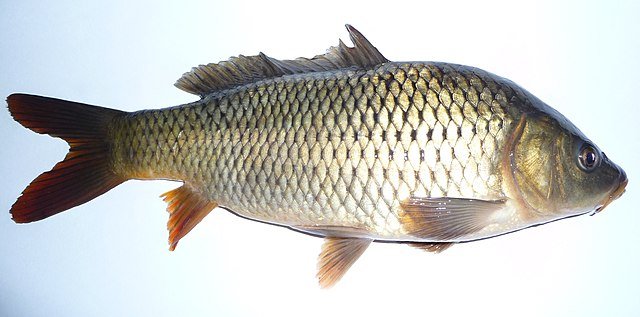
Infectious diseases affect both humans and animals, causing significant health and economic burdens. While medical advancements aid humans, breeding animals with genetic resistance offers a sustainable solution for aquaculture. This approach not only benefits fish health but also opens up intriguing research possibilities.
A new study led by Prof. Lior David from the Hebrew University marks a crucial step toward understanding disease resistance in fish. We already knew that resistant fish are more likely to survive an infection. But what about their impact on disease spread? Can they infect others as easily?
This study focused on common carp and Cyprinid herpesvirus 3 (CyHV-3), a major disease threat. Researchers created four scenarios by introducing resistant and susceptible carp as either “shedders” (actively shedding the virus) or “cohabitants” (exposed to the virus).
Beyond survival: disease resistance
Traditionally, disease resistance has focused on an animal’s ability to survive an illness. However, there’s more to the story. Scientists are now studying how resistance affects the likelihood of an animal becoming infected and the probability of transmitting the disease to others (infectivity).
Thus, studying disease resistance isn’t just about survival rates. Comparing susceptible and resistant strains offers a powerful research tool for understanding how different host-pathogen interactions influence disease outcomes. This knowledge helps refine breeding programs and develop better disease control strategies.
The new research is crucial for understanding disease outbreaks and developing effective control strategies. While we know much about survival rates in susceptible and resistant animals, there’s a significant knowledge gap regarding their infectivity and how these two factors interact.
Generally, disease resistance has been associated with lower infectivity (the likelihood of disease transmission). However, some infected individuals can be “super-spreaders,” transmitting the disease more easily. While these hypotheses exist, few studies have explored the true relationship between resistance and infectivity.
The carp case: a model for disease resistance
Common carp (Cyprinus carpio) is a crucial species for aquaculture but is frequently affected by a disease caused by CyHV-3. A recent study investigated carp infectivity by testing the infectivity of susceptible and resistant fish types playing roles as shedders (infectors) and cohabitants (infected) in the four combinations of types and roles.
The results were fascinating:
- Resistant fish had a clear advantage: They showed lower viral loads and higher survival rates compared to susceptible fish.
- Resistance benefits the community: Susceptible fish exposed to resistant shedders had lower mortality rates compared to those exposed to susceptible shedders. This suggests that resistant fish may shed less virus overall.
- Lower viral load in the environment: Tanks with resistant shedders had overall lower virus levels, further reducing the infection risk for cohabitants.
Breaking the infection chain
This study revealed a crucial link: disease resistance not only improves the survival of an individual fish but also reduces the overall virus spread. Lower virus levels in tanks with resistant shedders suggest that they shed less virus into the water, leading to lower viral loads in exposed fish.
Professor Lior David, the study’s lead researcher, commented, “The study provides experimental evidence that resistance to CyHV-3 reduces infectivity due to a host mechanism that restricts viral replication and pathogen shedding. This not only benefits aquaculture production but also helps reduce virus spread and disease in natural water bodies.“
The big picture: implications for aquaculture and beyond
These findings have significant implications for both aquaculture and our understanding of disease spread in general. By breeding disease-resistant fish, we can create healthier populations, reduce economic losses, and potentially minimize antibiotic use in aquaculture. Additionally, this research paves the way for a more comprehensive understanding of disease resistance and its impact on disease dynamics.
Conclusion
These results demonstrate that disease-resistant fish not only survive better but also reduce the infection rate in others. This has important implications for aquaculture production and disease epidemiology. The study highlights the importance of breeding disease-resistant animals for sustainable food production and animal welfare.
This study is an important step forward in understanding the multifaceted nature of disease resistance. By delving into the link between resistance and infectivity, we can develop even more effective strategies to combat infectious diseases in fish and potentially other animals.
Contact
Lior David
Department of Animal Sciences, RH Smith Faculty of Agriculture, Food and Environment
The Hebrew University of Jerusalem, Rehovot, Israel
Email: lior.david@mail.huji.ac.il
Reference (open access):
Dorfman, B., & David, L. (2024). Disease resistance and infectivity of virus susceptible and resistant common carp strains. Scientific Reports, 14(1), 1-12. https://doi.org/10.1038/s41598-024-55133-2

